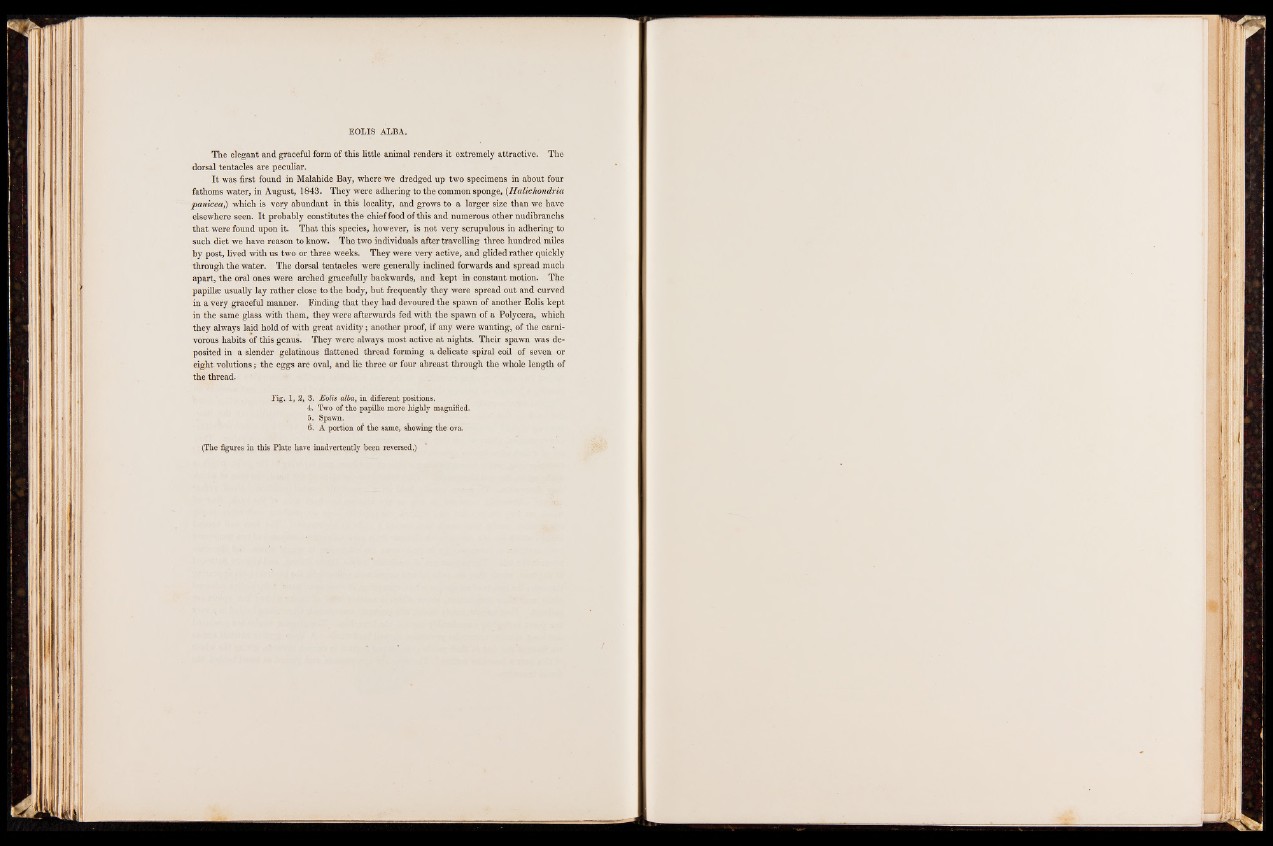
EOLIS ALBA.
The elegant and graceful form of this little animal renders it extremely attractive. The
dorsal tentacles are peculiar.
It was first found in Malahide Bay, where we dredged up two specimens in about four
fathoms water, in August, 1843. They were adhering to the common sponge, (Halichondria
panicea,) which is very abundant in this locality, and grows to a larger size than we have
elsewhere seen. It probably constitutes the chief food of this and numerous other nudibranchs
that were found upon it. That this species, however, is not very scrupulous in adhering to
such diet we have reason to know. The two individuals after travelling three hundred miles
by post, lived with us two or three weeks. They were very active, and glided rather quickly
through the water. The dorsal tentacles were generally inclined forwards and spread much
apart, the oral ones were arched gracefully backward?, and kept in constant motion. The
papillae usually lay rather close to the body, but frequently they were spread out and curved
in a very graceful manner. Finding that they had devoured the spawn of another Eolis kept
in the same glass with them, they were afterwards fed with the spawn of a Polycera, which
they always laid hold of with great avidity; another proof, if any were wanting, of the carnivorous
habits of this genus. They were always most active at nights. Their spawn was deposited
in a slender gelatinous flattened thread forming a delicate spiral coil of seven or
eight volutions; the eggs are oval, and lie three or four abreast through the whole length of
the thread.
Fig. 1, 2, 3. Eolis alba, in different positions.
4. Two of the papillae more highly magnified.
5. Spawn.
6. A portion of the same, showing the ova.
(The figures in this Plate have inadvertently been reversed.)